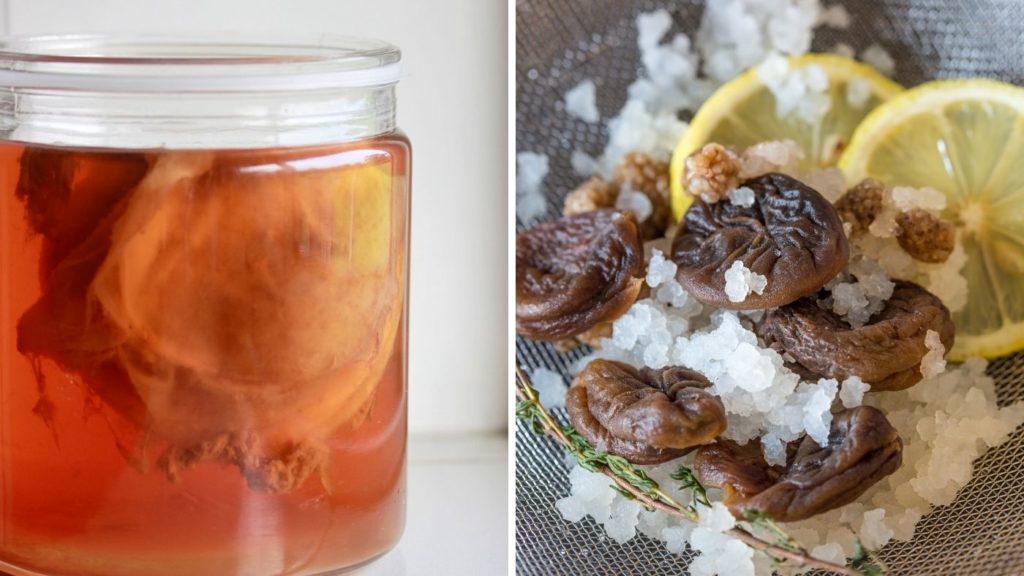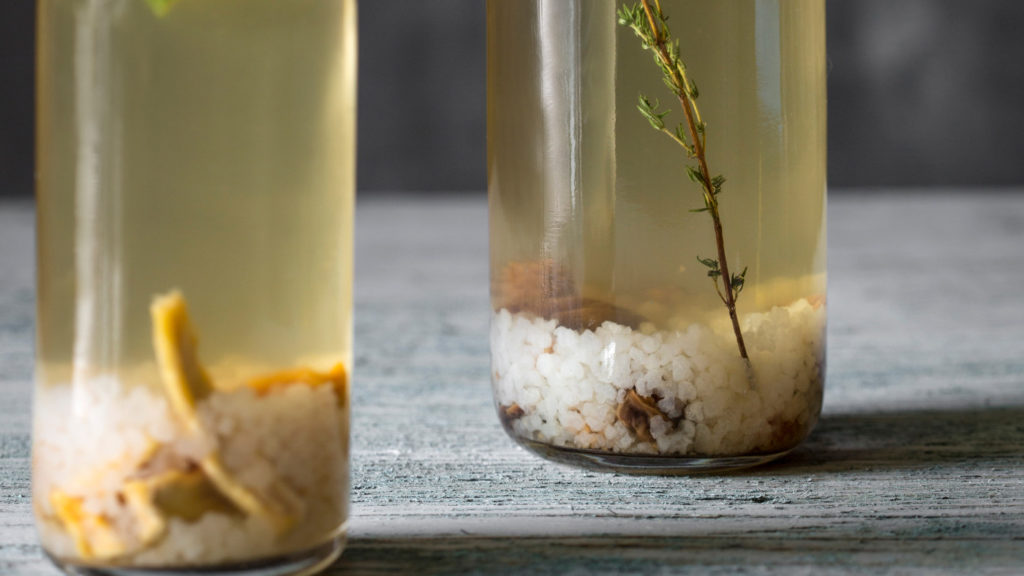Have you ever had doubts about your water kefir grains’ behaviour while preparing delicious water kefir in your kitchen?
Water kefir, also known as fruit kefir or tibicos, is a fermented drink that is easy to prepare with simple ingredients.
However, the water kefir grains, containing the colony of microorganisms that are responsible for the fermentation process, can occasionally have problems.
It’s only natural to have some questions! This FAQ will help you identify what is normal and what is not with your water kefir.
Don’t worry, most of the time, the problem is caused by a slight imbalance that can easily be rectified.
Jump straight to the question you’re interested in:
- What Do Healthy Water Kefir Grains Look Like?
- Have My Water Kefir Grains Died?
- Is the White Foam on My Kefir Dangerous?
- Why Does a White Film Develop on the Surface?
- What Should I Do if Mould Develops on My Kefir?
- Why Doesn’t My Water Kefir Fizz?
- Why Don’t My Grains Reproduce?
- Why Is My Water Kefir Slimy?
- Why Are My Kefir Grains Brown?
- Why Is My Water Kefir Bitter?
- Why Are My Kefir Grains Falling Apart?
What Do Healthy Water Kefir Grains Look Like?
First of all, to know if your kefir grains are in trouble, it is important to know what they look like when they are healthy!
As a general rule, if the water kefir grains are capable of turning sweet water into slightly tangy and fizzy kefir within 48 hours, they are fine.
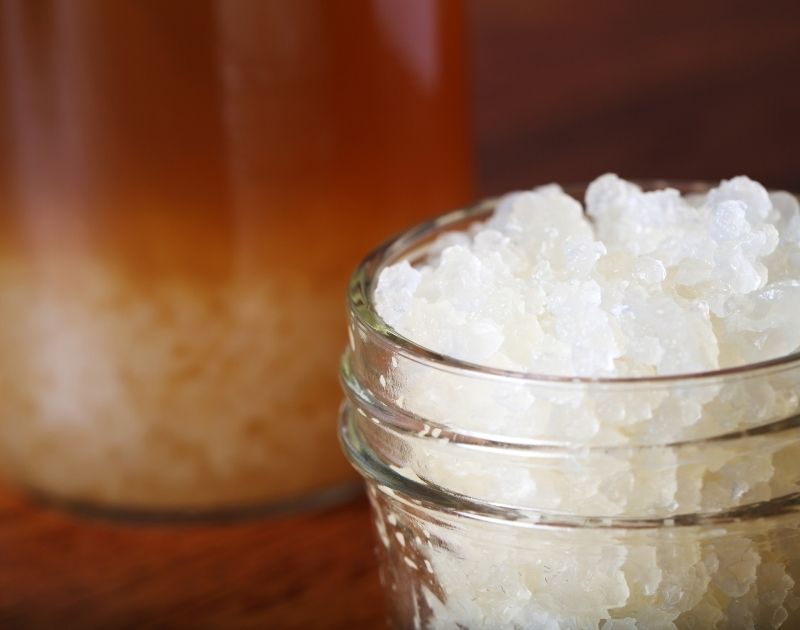
Active and regular fermentation is the main sign that the microorganisms in the kefir are healthy. Colour, shape, size, position in the jar, and growth speed are not indicators of healthy grains.
Kefir grains need several elements to stay healthy:
- Sugar
- Nutrients and minerals (found in water, sugar, dried fruit)
- Slightly tangy environment
- Stable temperature
- Regular fermentations
An excess or lack of any of these elements can throw the colony off balance. However, kefir grains are resilient and will recover their balance within one or two recipes.
Have My Water Kefir Grains Died?
Kefir grains are resilient and can stay alive for years. However, if they are neglected (e.g. kept too long in the fridge), they can weaken and die.
To find out if your water kefir grains have died, you can test them by making them ferment a new batch. If the grains are dead, the water will remain very sweet and there will be no sign of fermentation. Another sign is the appearance of mould on the surface.
Unfortunately, there is nothing you can do if this happens. Get new grains and start again!
Is the White Foam on My Kefir Dangerous?
During fermentation, white foam can form on the surface of water kefir. It appears especially when fermentations are too lengthy. It can also come from the sugar used.
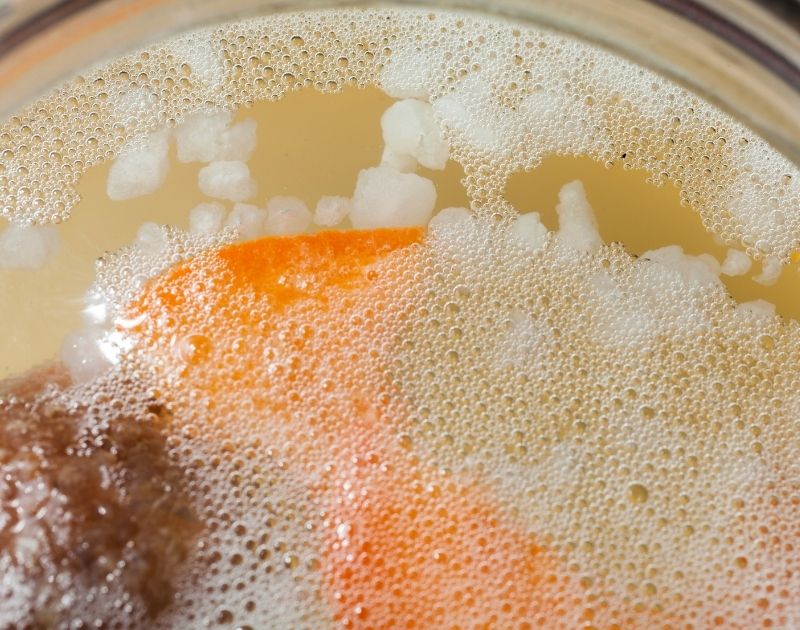
This is normal and not dangerous. You can remove it before filtering your kefir. Be careful not to mistake it for kham yeast or mould (see next two items).
Why Does a White Film Develop on the Surface?
Kham yeast is a micro-organism that, in the presence of oxygen, sometimes forms a white film on the surface of kefir. Yeast can develop when kefir grains are left in their water too long or when the fermentation temperature is too high. They can also come from the fruit used, which is why it is important to rinse them before use.
Remedy: Gently rinse the grains and put them in new sugar water, like when you activate your grains. Keep an eye on the new recipe: if yeast quickly returns, the kefir culture is weakened.
What Should I Do if Mould Develops on My Kefir?
Mould is very rare but can develop when the kefir culture is dead or weakened.
You will always find the mould on the surface of the liquid, and it looks like the mould on food that has been left at the bottom of the fridge. Mould is white, blue, or green and has a hairy, powdery appearance.
Remedy: If you find mould on your kefir, throw it out. Do not keep the grains, even if they have not been in direct contact with the mould. Disinfect all your equipment thoroughly.
Why Doesn’t My Water Kefir Fizz?
During the first fermentation in the jar, the carbon dioxide created by the yeast evaporates in the air. Since most of the bubbles are not trapped in the liquid, kefir does not fizz much.
Instead, it is when it undergoes a second fermentation, in sealed bottles, that the fizz develops the most.
Remedy: Use airtight, pressure-resistant bottles to facilitate the formation of bubbles.
Caution: If your kefir does not fizz and remains very sweet after 48 hours, the grains may have died.
Why Don’t My Grains Grow and Reproduce?
Kefir grains are known to multiply very quickly. Ideal for giving some to everyone around you! However, sometimes the grains do not reproduce from one time to another.
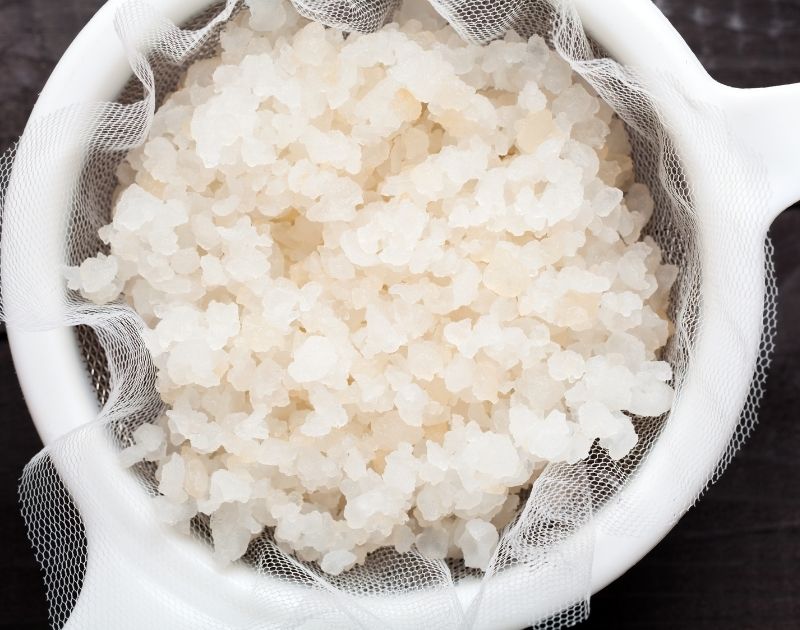
If the grains continue to turn sugar water into kefir, don’t worry, they are still alive. There may be several reasons why the grains are not multiplying:
- Too long and irregular fermentations
- Stored too many times in the fridge
- Fermentation temperature too high or too low
- Not enough nutrients
- Too many kefir grains for the amount of water and sugar
Remedy: By adjusting a few parameters and making frequent and regular recipes (every 48 hours), your grains will start to grow again.
To learn more about water kefir good practices, check out the complete guide to making water kefir.
Why Is My Water Kefir Slimy?
Water kefir can become slimy for many different reasons:
- Too much or too little nutrients
- Grains under stress due to a change in temperature or routine
- Sugar contaminated with Leuconostoc bacteria
In all these unbalanced conditions, harmless bacteria take over the fermentation process and create a kind of gel. Although not very pleasant to the palate, this substance is edible.
Remedy: To reset the grains, rinse them gently and put them in fresh sugar water.
Why Are My Kefir Grains Brown?
Water kefir grains can change colour depending on the ingredients used.
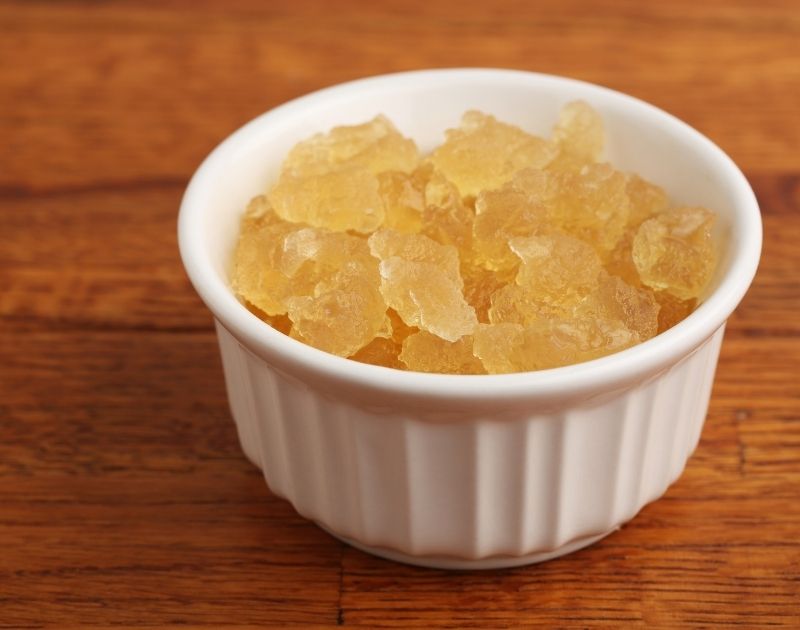
White sugar can give translucent kefir grains, while brown sugar, molasses, and minimally processed sugars give a brown tint to kefir grains.
Remedy: Don’t do anything, it’s normal!
Why Is My Water Kefir Bitter?
The longer the lemon peel is in the kefir, the more bitter it will become.
Remedy: You can remove the peel or add only the lemon juice.
Why Are My Kefir Grains Falling Apart?
Sometimes, the grains start to crumble and fall apart into tiny pieces until they become as small as sand grains. They may also form a sort of opaque cloud at the bottom of the jar. This is not normal!
This can happen if kefir grains have been left for more than 72 hours in the same water, which has then become very acidic.
Remedy: Gently remove the grains and start a new fermentation.
